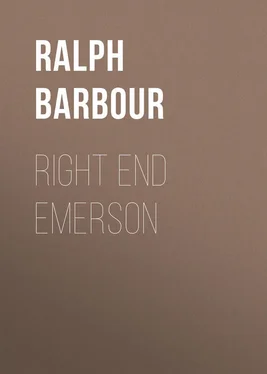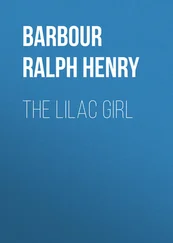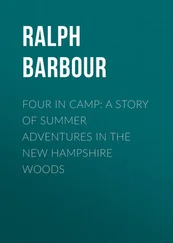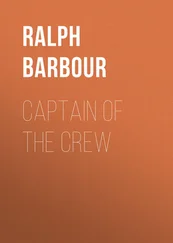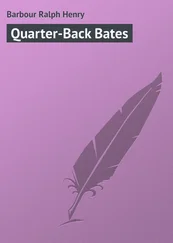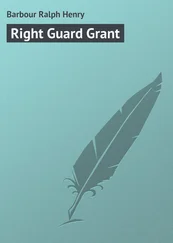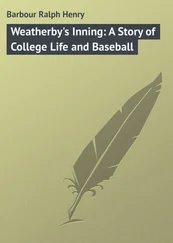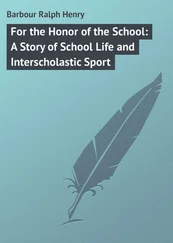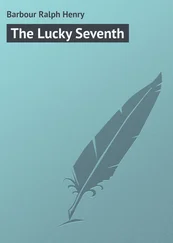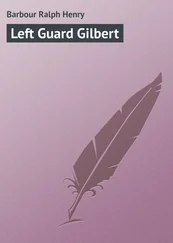Ralph Barbour - Right End Emerson
Здесь есть возможность читать онлайн «Ralph Barbour - Right End Emerson» — ознакомительный отрывок электронной книги совершенно бесплатно, а после прочтения отрывка купить полную версию. В некоторых случаях можно слушать аудио, скачать через торрент в формате fb2 и присутствует краткое содержание. ISBN: , Жанр: foreign_prose, foreign_children, на английском языке. Описание произведения, (предисловие) а так же отзывы посетителей доступны на портале библиотеки ЛибКат.
- Название:Right End Emerson
- Автор:
- Жанр:
- Год:неизвестен
- ISBN:http://www.gutenberg.org/ebooks/50414
- Рейтинг книги:4 / 5. Голосов: 1
-
Избранное:Добавить в избранное
- Отзывы:
-
Ваша оценка:
- 80
- 1
- 2
- 3
- 4
- 5
Right End Emerson: краткое содержание, описание и аннотация
Предлагаем к чтению аннотацию, описание, краткое содержание или предисловие (зависит от того, что написал сам автор книги «Right End Emerson»). Если вы не нашли необходимую информацию о книге — напишите в комментариях, мы постараемся отыскать её.
Right End Emerson — читать онлайн ознакомительный отрывок
Ниже представлен текст книги, разбитый по страницам. Система сохранения места последней прочитанной страницы, позволяет с удобством читать онлайн бесплатно книгу «Right End Emerson», без необходимости каждый раз заново искать на чём Вы остановились. Поставьте закладку, и сможете в любой момент перейти на страницу, на которой закончили чтение.
Интервал:
Закладка:
In a month, even in so short a time as a week, maybe, the sorts will be fewer, the difference between this boy and that less apparent. Already the influences that in the end mold all toward a certain pattern will have been felt, and Jack will have begun to model his conduct and speech and attire after those of Tom, who, impressed with the stamp of one or more years at the school, already tends toward the ultimate pattern. That pattern varies with different schools, yet it is much the same in essentials, and, on the whole, it is a good pattern, being founded on a wise discipline and builded of cleanliness of mind and healthfulness of body, of self-respect and self-control and, always, the love of fair-play.
To-day there was the genial warmth of a still New England early autumn morning over the scene. The elms and maples that bordered the streets still held their verdant leaves and the grass that grew between the graveled roads and paths that intersected the School Green was still unchanged. The Green extended along the west side of Academy street for two blocks and from that quiet thoroughfare arose at an easy grade for the width of another block to the line of brick and limestone buildings that spanned it. Yet, following the center path, one passed two structures ere the wide steps of Academy Hall were met: on the right, near River street, Memorial Hall, containing library and auditorium and a few class rooms, and on the left, close to Meadow street, and partly hidden by trees, the modest and attractive residence of the Principal, Doctor Maitland McPherson, known to the School more simply, yet quite respectfully as “Mac.” Behind the main row of buildings stood two others, the Carey Gymnasium, a recently built, up-to-the-minute structure, and, to its left and directly back of Academy Hall, Lawrence, where Alton boys flocked thrice a day and performed certain rites at many long, white-draped tables. Having passed Lawrence and Carey, one passed a cluster of tennis courts and saw, spread out before him, several acres of fine turf whereon, close at hand, were set many steel-framed stands between whose tiered seats appeared the blue-gray ribbon of the running track and the gleaming white lines of the first team gridiron. To the left was the diamond, and ere the further confines of the tract stayed the wandering gaze a second baseball field and a second gridiron met the sight. Far away was a faint glint that told of the river, though the stream was hidden for most of its way by trees that, beyond its winding course, marshaled themselves into a forest and marched westward over the low hills toward the sunset.
But we have wandered far afield. Let us retrace our steps as far as Upton and climb the first flight of stairs. Half way along the corridor to the right is a door numbered 27, and under the numerals two cards are secured with thumb-tacks. These bear the following inscriptions, in the first case written, in a rather round hand, with pen and ink, in the second case imprinted by the engraver’s art: Russell Wilcox Emerson – George Patterson.
Beyond the now closed door only one of the young gentlemen named is to be found. Russell, seated in front of the study table in the center of the small yet pleasant room, bends over a sheet of paper that looks very much like a bill of goods. At the top in fat black letters appears the legend: The Proctor-Farnham Sporting Goods Company. Follows a Broadway, New York, address, and then come many typewritten lines, each ending in figures that form a column down the right-hand margin of the sheet. With pencil in hand, Russell reads, frowns and lightly checks the items, and finally, having reached the bottom of the paper, he leans back in his chair, taps the pencil against his teeth and stares dubiously across to the open window. During the last few days it has become more and more apparent that the merchant who starts in business with insufficient capital must expect anxious moments. Removing his gaze from the window, Russell opens the small drawer at the right and takes out a very new bank book. Reference to the first – and so far only – item set down therein fails, however, to lift the frown from his brow, and, sighing, he looks once more at the appalling total beneath the column of figures on the bill, shakes his head, returns the small bank book to the drawer and glances at his watch. Although the nine o’clock bell had held no summons to him, it will be different when ten o’clock comes, and it is already very close to that hour. So he places the troubling bill in the drawer, drops several other documents upon it and hides them all from sight with a slightly vindicative bang . But, had you been there to look over his shoulder, your gaze would doubtless have fallen on the topmost document and you would have perhaps wondered at the presence of what was at first glance a florist’s bill. Then, however, looking further, you would have beheld beneath the printed inscription – “J. Warren Pulsifer, Florist, 112 West Street” – the scrawled legend:
“Received of Russell W. Emerson Twenty-two Dollars and Fifty Cents ($22.50) for one month’s rent of premises.
“J. Warren Pulsifer.”CHAPTER IV
JIMMY READS THE PAPER
The Doubleay was written and edited in the sanctum in Academy Hall and printed in a small job printing shop over Garfield’s grocery on State street. As school weeklies go, The Doubleay was a very presentable sheet. Typographical errors were only frequent enough to encourage the reader of a humorous turn of mind to a diligent perusal of the four pages; the advertising matter was attractively displayed and the editorial policy was commendably simple, being to present the news accurately and briefly. The paper was published on Thursday and distributed to subscribers and advertisers by a more or less efficient corps of six young gentlemen, usually freshmen, who received the munificent reward of half a cent per copy. The first issue of the paper this fall came out on the second Thursday of the term, and, according to custom, contained six pages instead of the usual four, the added matter consisting of the student list arranged by classes and printed on two sides of a half-sheet under the impressive legend: The Doubleay – Supplement .
Now, if your transom was open when the carrier reached your door you found the paper on the floor when you returned to your room, or, if it happened to flutter under a bed or into the waste-basket, you discovered it the next day or a week later or not at all, as the case might be. To-day, however, Stanley Hassell pushed it aside with the opening door when he and Jimmy returned from the gymnasium and, picking it up, tossed it to the table.
“All the news that’s fit to print,” he commented. “The old Flubdub’s out again, Jimmy.” Stanley intended no disrespect to the journal: he merely used the customary name for it. Jimmy sighed as he sank into a chair and reached for the paper.
“Why, I’m glad to see its cheerful face again,” he murmured. “And doesn’t it look familiar! I wonder if any of the old friends of my youth are missing.” He was silent a minute as he turned the pages and as Stanley stretched himself on a window-seat that was four inches too short for him. “No,” Jimmy went on, “they’re all here: Sampson’s Livery, Girtle, the Academy Tailor, Go to Smith’s for Stationery, The Best Soda in the City, College Last Shoes – all the dear, familiar old friends of me youth, Stan. And here’s Gookin, the Painless Dentist, still holding out a welcoming hand, and the Broadway Theater and the New York Haberdashery and – yes, here are a couple of new ones! I tell you, Stan, the old Flubdub’s a live un! ‘After the Game – Drink Merlin Ginger Ale.’ Now, why should I, Stan? Seems to me it’s not enough to just tell me to drink the stuff: they ought to give me a reason why – hello! Well, I’ll be swiggled! Listen to this, will you? ‘The Sign of the Football. R. W. Emerson and G. Patterson announce the opening of their shop at 112 West street with a full line of Athletic and Sporting Supplies and cordially solicit the patronage of their fellow students. Quality goods at New York Prices. Academy Discount. “PandF spells Best!”’”
Читать дальшеИнтервал:
Закладка:
Похожие книги на «Right End Emerson»
Представляем Вашему вниманию похожие книги на «Right End Emerson» списком для выбора. Мы отобрали схожую по названию и смыслу литературу в надежде предоставить читателям больше вариантов отыскать новые, интересные, ещё непрочитанные произведения.
Обсуждение, отзывы о книге «Right End Emerson» и просто собственные мнения читателей. Оставьте ваши комментарии, напишите, что Вы думаете о произведении, его смысле или главных героях. Укажите что конкретно понравилось, а что нет, и почему Вы так считаете.
